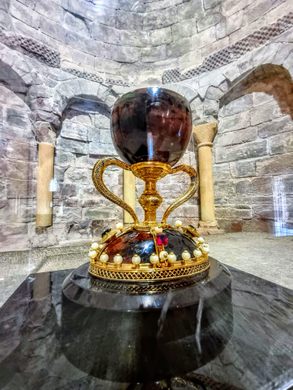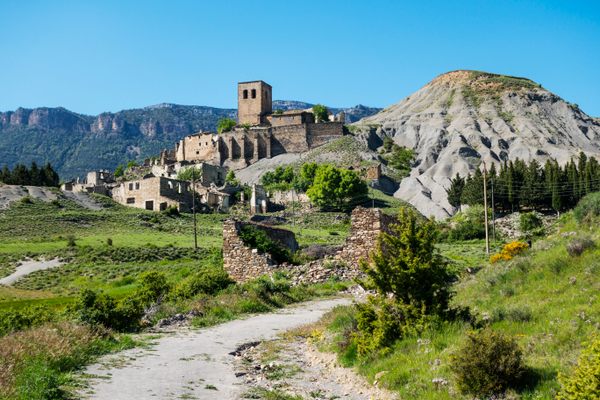Monastery of San Juan de la Peña
This religious complex carved into a cliff is steeped in legends of miraculous stags and the Holy Grail.
Tucked high in the Pyrenees, San Juan de la Peña ranks among the most important religious sites in the Aragon region of Spain thanks to centuries of royal pilgrimages, paired with legendary tales linking it with Christianity’s most coveted treasure: the Holy Grail.
The monastery was constructed in two sections—the first in 920, followed by the lower cloister in 1190. San Juan de Peña has remained one of the safest, most secure places to store booty of any sort for well over a millennia. This is due in no small part to the cliffside the structures were built directly into, which lent the site its name (“Saint John of the Cliff”).
The legends swirling around this highly fortified, extremely inconvenient cloister are rich and ancient. The first holds that a nobleman in hot pursuit of a stag was unable to stop his horse from chasing the beast off the precipice. When the man was delivered safely into the mouth of the cave below, he found the remnants of a hermit and decided to commemorate his miraculous survival by building San Juan de la Peña in gratitude.
More famously, a story holds that a Roman soldier acquired what is claimed to be the much sought-after Holy Grail at some point during the 3rd century. After transporting this most coveted relic back to his home at Huesca, a Moorish invasion caused the cup to be transferred to San Juan de la Peña where it would be safe from marauders. Little did they anticipate that Aragonese King Martino V would abscond with it to his palace in 1399.
When the monks asked for it to be returned, the King duped them with a replica, which went up in flames during a fire that devastated the monastery in 1675. A replica of this replica continues to be displayed on premises at San Juan de la Peña to this day, while the original Roman-era cup King Martino made-off with now sits in the Valencia Cathedral.

































Follow us on Twitter to get the latest on the world's hidden wonders.
Like us on Facebook to get the latest on the world's hidden wonders.
Follow us on Twitter Like us on Facebook